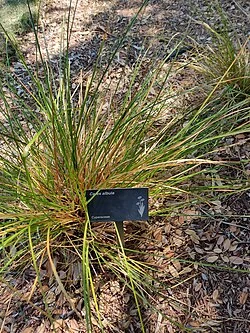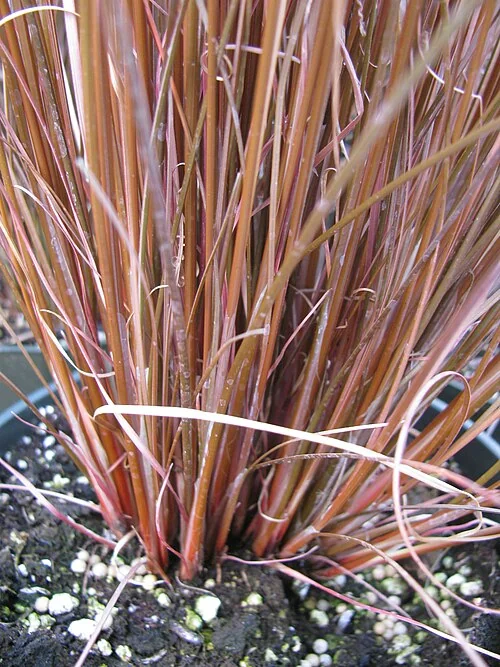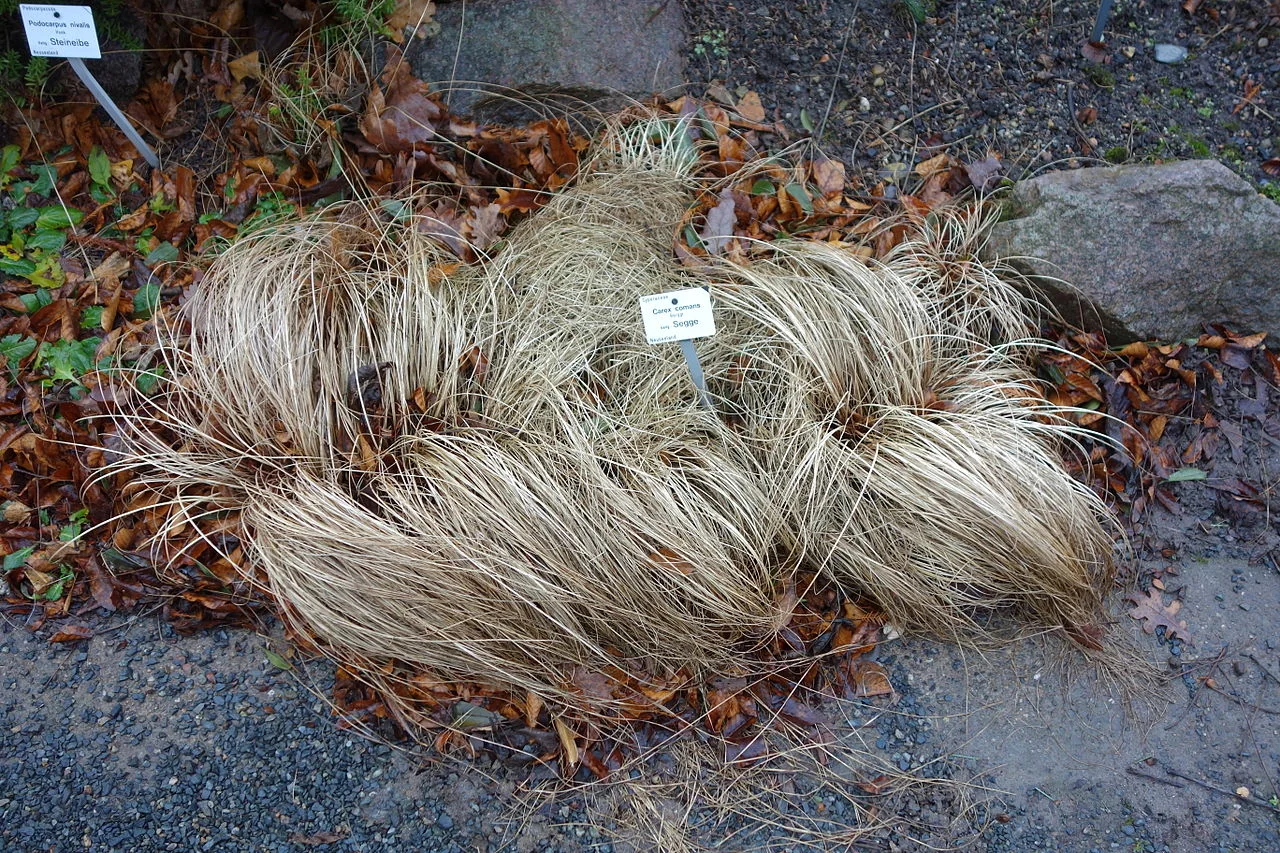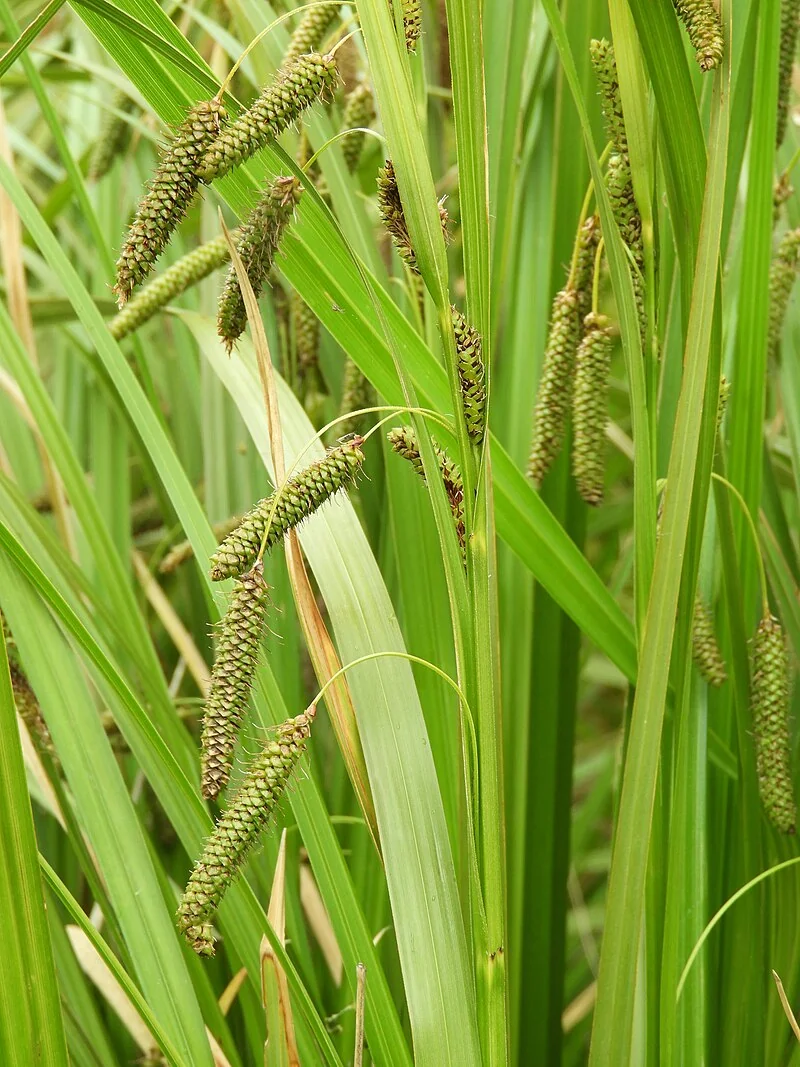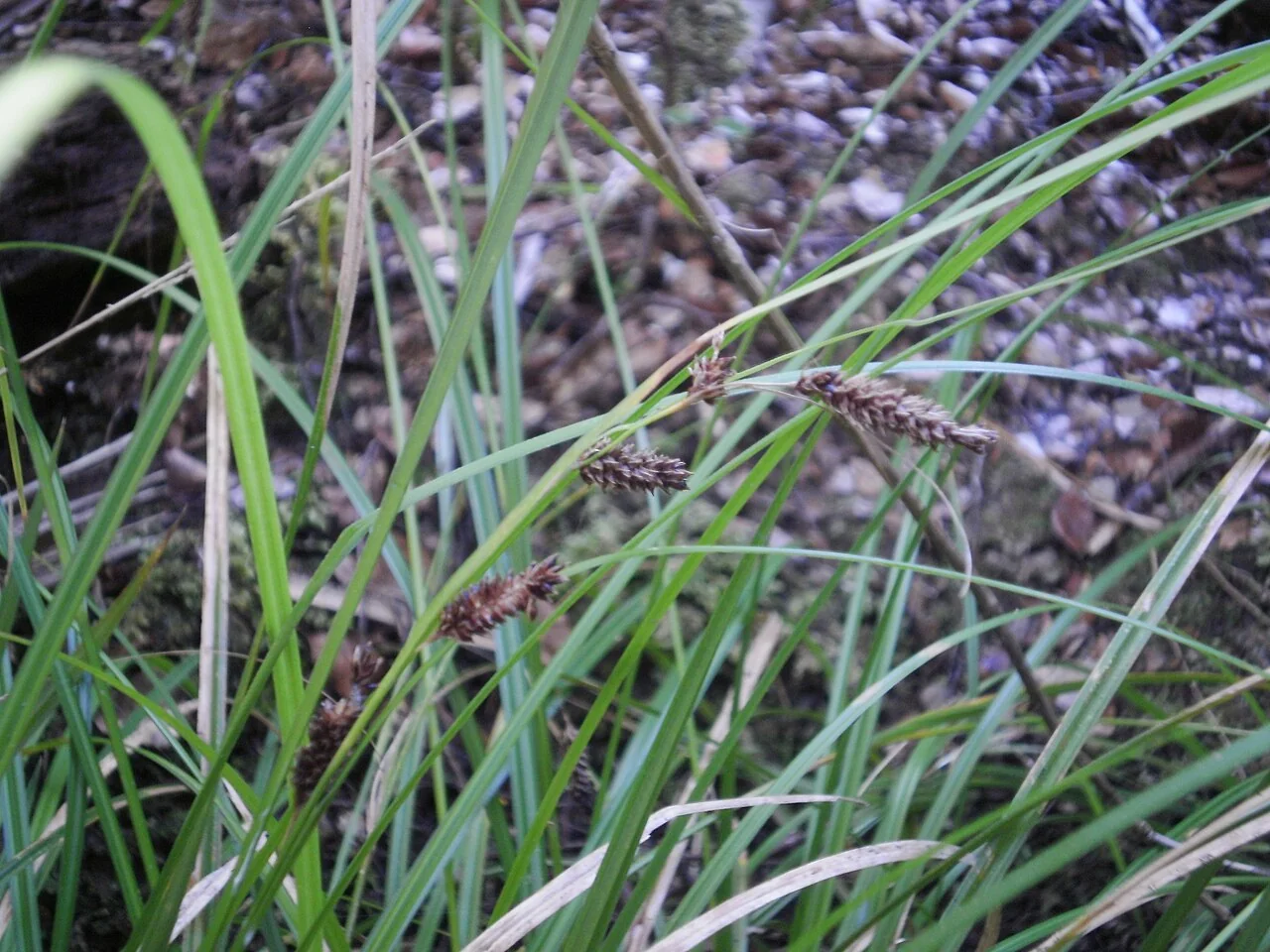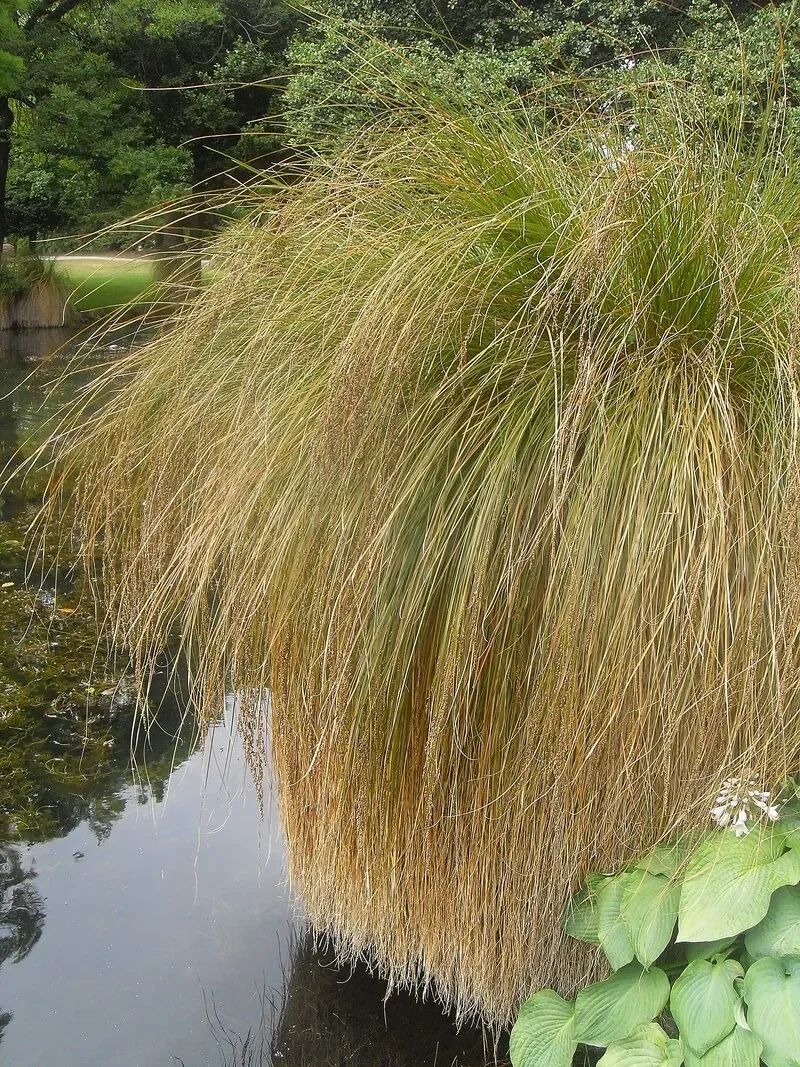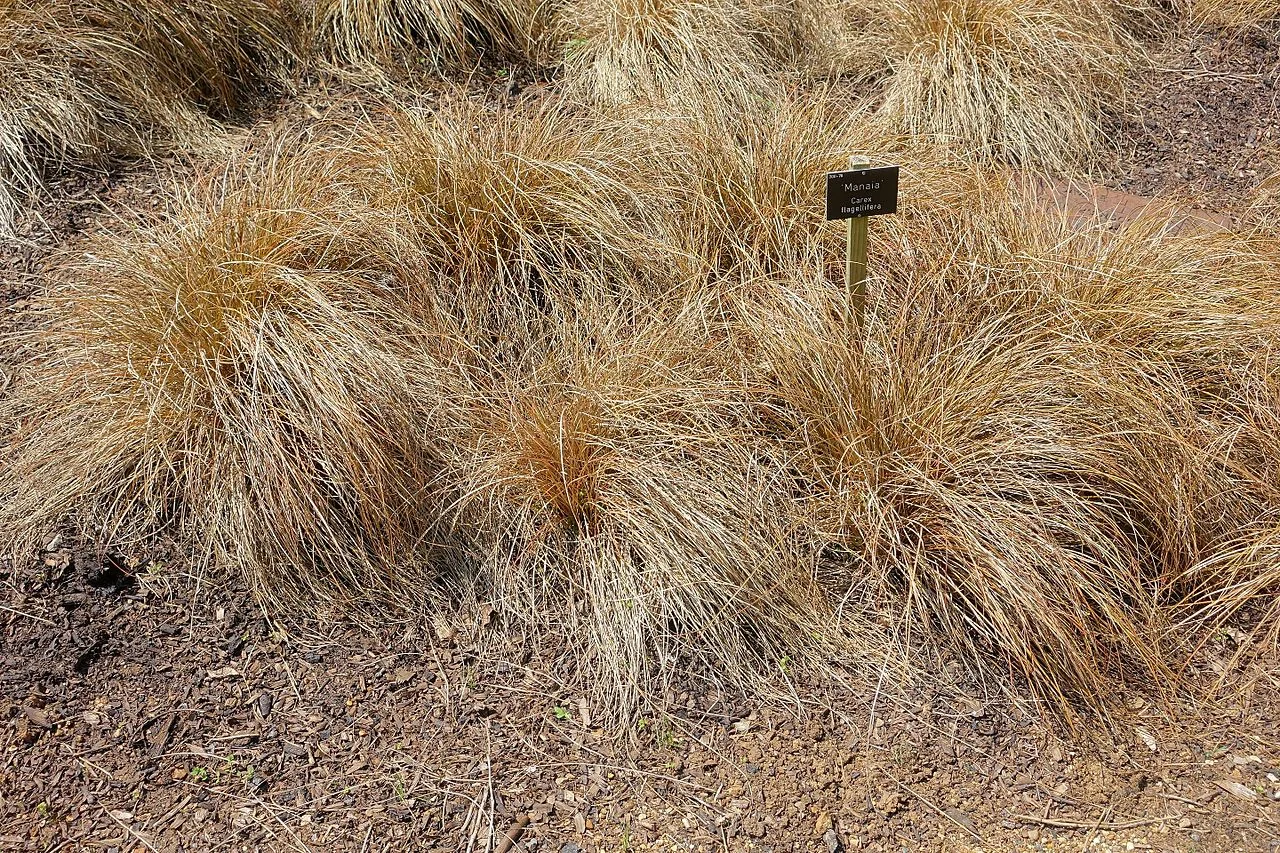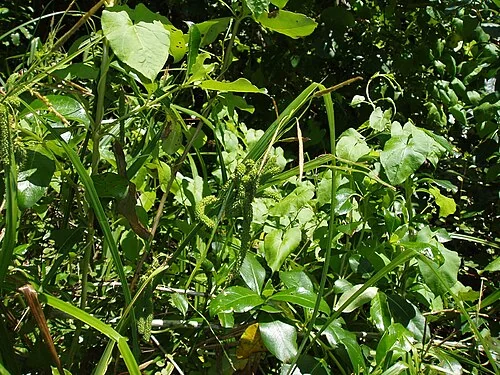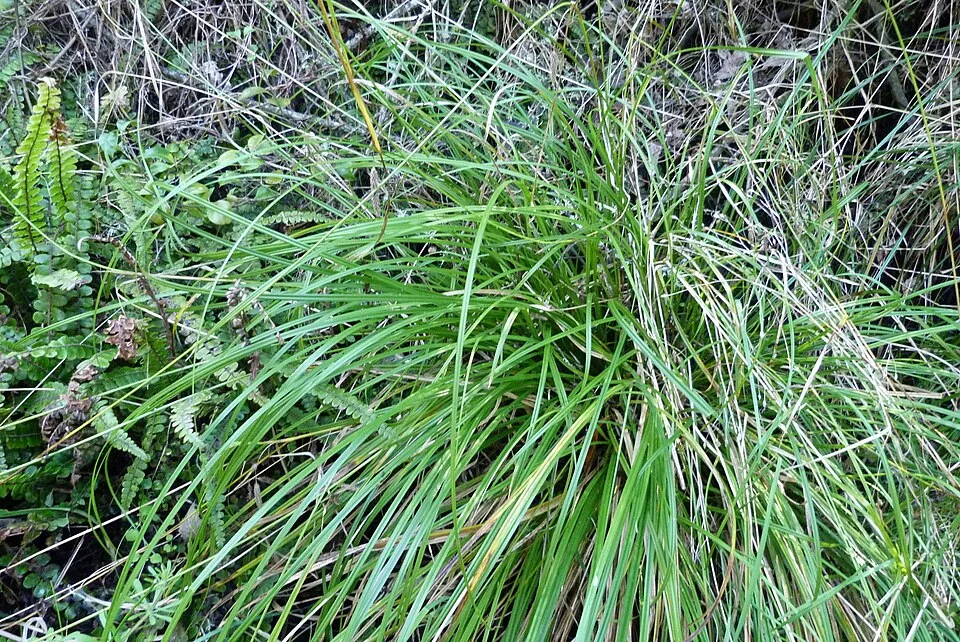
Solander's Sedge
Carex solandri
Carex solandri , commonly known as Solander's Sedge or New Zealand Forest Sedge, is a graceful evergreen sedge endemic to New Zealand's North, South, and Stewart Islands. Named after Swedish botanist Daniel Solander and first described by Francis Boott in 1853, this versatile native sedge forms distinctive yellow-green tufts with elegantly drooping, ribbed leaves up to 60cm tall. Found naturally in riparian forests from coastal to montane elevations, it thrives as the dominant sedge of alluvial terraces and riversides while also colonizing wet seepages and forest slip scars. Its slender, arching foliage gracefully nods at the tips, creating an attractive cascading effect that distinguishes it from other New Zealand sedges. During summer months, inconspicuous flowers develop into distinctive dark brown seed heads, providing seasonal interest and wildlife value. This hardy species demonstrates remarkable adaptability, tolerating both damp forest conditions and periodic drought, making it an excellent choice for wetland restoration projects and shaded garden areas seeking authentic New Zealand flora.

Plant Description
Carex solandri is a fine, tufted sedge forming low to medium clumps with graceful arching leaves and narrow seed heads. A versatile forest-margin carex for dry-to-mesic soils.
Quick Facts
| Scientific Name | Carex Solandri |
|---|---|
| Common Names | Solander's Sedge, New Zealand Forest Sedge |
| Family | Cyperaceae (Sedge family) |
| Plant Type | Evergreen perennial sedge |
| Height | 50-70cm (up to 1 m) |
| Spread | 50cm forming dense tufts |
| Foliage | Yellow-green, drooping, ribbed leaves up to 1cm wide, gracefully arching |
| Flowers | Inconspicuous, developing into dark brown seed heads |
| Flowering Time | Summer (December-February) |
| Fruit | Dark brown seed heads with uniformly coloured utricles |
| Habitat | Riparian forests, alluvial terraces, riversides, wet seepages, slip scars |
| Distribution | North, South, and Stewart Islands of New Zealand (endemic) |
| Elevation Range | Coastal to montane (sea level to 600 m) |
| Conservation Status | Not Threatened |
| Water Needs | High - prefers damp conditions but tolerates some drought |
| Light | Partial shade to full sun |
| Frost Tolerance | Hardy - tolerates moderate frosts |
| Salt Tolerance | Low - not suitable for coastal exposure |
| Growth Rate | Moderate - steady establishment |
| Lifespan | Long-lived perennial (10+ years) |
| Climate Cities | Suitable for Auckland, Hamilton, Rotorua, Wellington, Nelson, Christchurch |
| Distinguishing Features | Long filiform peduncles, uniformly dark-coloured utricles, drooping yellow-green foliage |
| Uses | Wetland restoration, forest gardens, pond margins, shaded areas, revegetation |
Climate Best Suited to
Temperate climates; tolerates frost and summer dry once established.
Regional Suitability
| City | Climate Suitability |
|---|---|
| Whangārei | Ideal |
| Auckland | Ideal |
| Hamilton | Ideal |
| Tauranga | Ideal |
| Rotorua | Ideal |
| Gisborne | Ideal |
| New Plymouth | Ideal |
| Napier | Ideal |
| Whanganui | Ideal |
| Palmerston North | Ideal |
| Wellington | Ideal |
| Nelson | Ideal |
| Christchurch | Ideal |
| Dunedin | Ideal |
| Invercargill | Ideal |
Natural Habitat
Common on forest margins, seepages and alluvial terraces, often on drier riparian banks than many carex species. Occurs from coastal lowland to montane scrub and light woodland where soils are free-draining but retain some moisture.
Plant Conservation
Not Threatened and locally abundant. Populations persist where riparian corridors remain intact; weed invasion and stock trampling can suppress seedlings. Restoration planting that reconnects forest edges and controls browsers supports long-term stability.
How to Grow
Planting Guide
Best Planting Practices
Space 0.4-0.6 m apart in staggered drifts for quick knit. Plant at the original depth, water to settle, and mulch to retain moisture while keeping the crown clear. Weed diligently in the first season to reduce competition and speed establishment.
Ecology
Dense root mats bind light soils, intercepting sediment on banks and terrace edges. Clumps provide cover for skinks and habitat for invertebrates, while seed and litter support detrital food webs. Useful as a matrix species beneath kānuka-mānuka successions.
Uses
Mass groundcover, forest-edge borders, drier rain-garden margins, and erosion control on well-drained banks. Its arching habit softens paths and rocks, and it blends naturally with open shrubland and light woodland schemes.
Landscaping Ideas
Layer with small Coprosma , Chionochloa tussocks and occasional Olearia to contrast fine textures against bold shrubs. Repeat in rhythmic drifts along paths for movement and cohesion.
Seasonal Care
Spring
Light feed and water during dry spells as new growth extends.
Summer
Deep, occasional watering aids root depth; maintain a clean mulch collar.
Autumn
Top up mulch and remove weed seedlings before winter moisture arrives.
Winter
Comb or lightly shear tired foliage in late winter to refresh clumps.
Pruning
Pruning Techniques
Groom by combing out dead blades and seed stems in late winter. Avoid cutting hard into the crown; a light shear to shape is sufficient, preserving the natural arching habit.
How to Grow Solander's Sedge
Carex solandri is a versatile forest-edge sedge that appreciates a free" draining loam and regular moisture during establishment. Prepare the site by removing weeds, loosening soil, and blending in coarse organic matter for structure without waterlogging. Plant at the original depth, water to settle, and mulch with bark or gravel to suppress weeds while keeping the crown clear. Once established it tolerates summer dry, but growth is best with occasional deep watering and a light spring feed.
Seed
Sow fresh seed onto a free-draining seed-raising mix in late summer when seeds are newly ripe for best germination rates. Cover lightly with fine grit and maintain consistent moisture in a warm, protected environment away from direct sunlight. Germination typically occurs within 4-8 weeks, though some seeds may take longer to emerge. Natural seed dispersal occurs through wind and bird activity, as the inflated seed cases are particularly effective at reaching suitable establishment sites. Seedlings should be pricked out carefully once they develop sufficient root systems and gradually hardened off before transplanting to their permanent positions.
Division
Divide established clumps in early spring as new growth begins, using a sharp spade or garden fork to separate firm, multi-shoot sections that include healthy root systems. Select divisions with at least 3-4 growing points for best establishment success. Replant immediately at the same depth as the parent plant, ensuring good soil contact around roots and watering thoroughly to eliminate air pockets. This method remains the most reliable approach for rapid establishment and is particularly effective for large-scale plantings where quick ground cover is desired. Divided plants typically establish faster than seedlings and maintain the parent plant's characteristics.
After-Care
Comb or shear old foliage in late winter to refresh, top-dress with compost where growth is poor, and maintain a weed-free mulch collar. Avoid waterlogged clays; consistent drainage preserves longevity and neat form.
Pests and Diseases
Common Problems and Solutions
Generally robust. Crown rot can develop in waterlogged sites; keep the crown clear of wet mulch. Occasional rust spots indicate poor airflow-thin surrounding vegetation. Aphids are uncommon and usually transient.
Cultural Significance
Traditional Uses and Values
While Carex solandri may not have the same level of documented traditional use as some other New Zealand sedges like pūrei ( Carex secta ), it remains an important component of New Zealand's indigenous flora with connections to the country's botanical heritage and naming traditions.
The species name honors Daniel Solander (1733-1782), a Swedish naturalist who was a student of Carl Linnaeus and later accompanied Captain James Cook on his first Pacific voyage (1768-1771). Solander was among the first Europeans to systematically study and collect New Zealand's unique flora, making his contribution to early botanical knowledge significant in understanding the country's native plant heritage.
As part of the Cyperaceae family, Carex solandri belongs to a group of plants that were traditionally Māori various practical applications. While specific traditional uses for this particular species are not well-documented, sedges as a group provided materials for weaving, thatching, and other cultural practices that remain important in contemporary Māori culture and land management approaches.
Today, Solander's Sedge serves an important role in ecological restoration projects and native plant gardening, helping to preserve New Zealand's wetland and riparian forest ecosystems. Its cultivation supports broader conservation efforts while maintaining connections to the country's unique botanical identity and the scientific legacy of early exploration and documentation.
Bonus Tip
Expert Growing Advice
Plant in broad drifts at 40-60 cm spacing to quickly shade soil and suppress weeds; water deeply after planting to settle roots and speed establishment.
